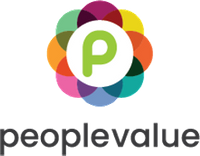How to design an age-inclusive approach to reward communications

According to current figures, the working population is becoming increasingly multi-generational. A third of workers will be over the age of 50 by 2020, at the same time, 64 per cent of the workforce will be generation Y (21-35 years old) and Z (6-20 years old) by 2025. Businesses must therefore align their reward communications accordingly, which means that taking an age-inclusive approach is now more important than ever.
When designing such an approach, there are several things to consider and explore. That’s why we reached out to over 200 HR professionals to understand what they see as the key factors in this process.
Ultimately, the goal must be to have every member of staff knowledgeable of and actively engaged with your reward schemes. The better the engagement, typically the stronger your return on investment.
How do you do it?
- Avoid age bias
With GDPR recently in the limelight, there has been a lot of talk and focus about the delivery of ‘relevant’ communications content. When considering this, it could be very easy to make assumptions about which communications methods, channels and messages would work best for different age groups within your business and segment your communications accordingly. However, it’s clear this is not without some risks.
None of the companies we surveyed currently tailor their internal reward communications to different age groups. Why is this? Interestingly, the majority (63 per cent) simply say they don’t segment their workforce into different age groups for any purpose.
When considering the methods or channels of communications, we learnt that aligning them to an age-segmented workforce can actually be disengaging because it allows age bias to define your approach which could result in employees getting excluded or worse feeling discriminated against.
Having said that, age segments do appear to have a place when it comes to tailoring the content you’re communicating. Not every aspect of reward is relevant for every generation, so you need to keep that in mind and review who your communications are going to and that the messages they’re receiving are relevant. - Have the right tools
37 per cent of the companies we surveyed don’t tailor their communications to different age groups because it’s either too costly or they don’t have the operational capability to do so. However, for many of these companies, a strategic approach to tailor content is part of their future plans. Therefore, to get the best possible engagement with your reward scheme, you should ensure that the right tools and technology are available to facilitate these tailored communications.
You want your communications to be measurable so that you can analyse your data and form improvement plans. Technology plays a big part in allowing businesses to analyse the impact of their communications which can then inform future strategies. According to our survey, the most common forms of measuring communications impact are by employee surveys and measuring participation/take-up rates.
If you don’t have the ability to do this internally, why not use a third-party provider to give you the tools and resources you need? - Understand your employees’ needs
The best way to deliver inclusive communications, is to find out exactly how your employees like to connect with content and the type of content they like. Listen to the opinions of your employees and let it influence the way you tailor your communications approach.
You could simply speak to a selection of employees, or conduct some in-depth focus groups, maybe even send out a company-wide survey to accurately capture your employees’ preferences. Whatever your approach, it’s important that you try to detect the key channels that will work for your reward communications and implement these accordingly.
According to our survey, 82 per cent of companies don’t currently enable their workforce to set their own preferences for the types of communications they receive. While this may seem contradictory, in fact, giving all of your employees the same communications means that no one gets excluded and instead gives them the choice to engage with whatever they want, when they want.
All of the companies we surveyed use a range of communications methods: 100 per cent use emails, letters and posters, 67 per cent also use their intranet and team briefings, and 25 per cent use videos, newsletters and events like roadshows. It’s clear that a mix of personal, digital and print communications is the best approach and will provide something that will speak to all of your employees. - Consider other factors
We’ve considered the age of employees, but that is just one element that should influence your reward communications strategy. As we know, age alone doesn’t define an individual, in fact, there are many other components that’ll have more of an influence on how your employees consume information and the type of reward information that is relevant to them. As a result, it’s highly recommended that by taking an all-inclusive initiative, you will be able to reach every employee and optimise your engagement levels.
Consider the different roles within your business. Where do your employees work and what type of channels will they have access to? This won’t be the same for every person. Some may be office-based, some may work remotely, others may not have access to a computer during the day. On a global scale, you need to also think about your employees’ first language too. All of these factors have a tangible effect on how employees consume content day-to-day and need to be taken into account when designing your reward communications.
The result…
Ultimately, when devising your reward communications, you need to think about the best channels to deliver messages to your employees, taking into consideration their age, gender, role within the business and attitudes, among many other components. Most importantly, understand their needs and adapt your communications accordingly.
Andy Caldicott, Managing Director at peoplevalue commented: “Communications really are the lifeblood of any scheme and should be the focus of investment by organisations. By taking an all-inclusive approach, organisations will be able to optimise their employee scheme engagement. While the age of your employees is certainly an important factor to consider, there are so many other different things that can influence the way in which people engage with reward content. Remember that there is no ‘one size fits all’ solution, so you need to understand their individual needs and deliver a multi-channel communications programme. Having the right toolkit to do this is therefore very important.”
This article is provided by peoplevalue.
In partnership with peoplevalue – The Employee Engagement Company
We are a leading provider of employee reward&recognition, benefits delivery&wellbeing solutions.







